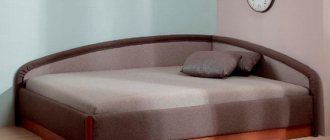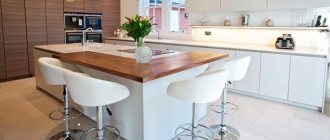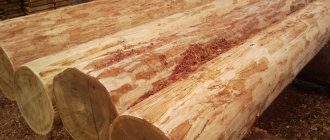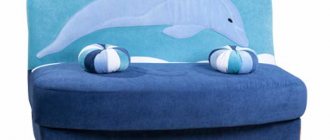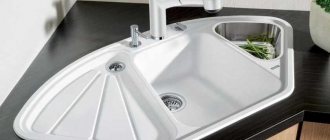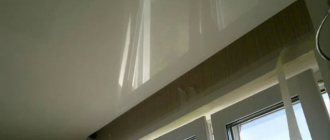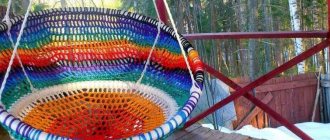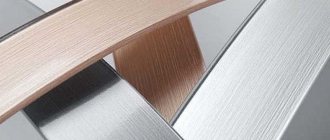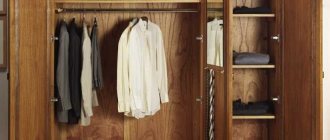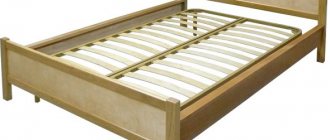Published July 21, 2021
There are different types of sofa fillings on the market: natural and synthetic, known to consumers for many years or with complex, incomprehensible names. In order to purchase the best option for the combination of price and quality, it is important to take into account the properties of the material itself and the purpose of its choice: the functional purpose of upholstered furniture, the preferences and health status of its future owners, the frequency of planned use and the size of the allocated budget.
Spring filler
A spring filler is a block of combined springs. It is most often used in vintage furniture and inexpensive modern models. Depending on the design features, it is divided into 3 types:
- Independent
This is a block of cylindrical, vertically placed springs, each of which is packed in a fabric cover and does not interact with the others. To ensure the softness of the structure, polyurethane, felt, batting or other materials are placed in its upper and lower parts.
Independent springs help maintain the spine in the correct position. Deflection in one place of a seat or mattress does not cause deformation in other areas. This provides an orthopedic effect, which is in demand in furniture used for sleeping.
- Dependent block (bonnel)
This is a type of construction that involves connecting springs using spiral steel wire. When one spring is deformed, the movement is transmitted to its neighbors. To ensure strength, the structure is secured with a metal frame. Felt, polyurethane foam, coconut coir or other materials that provide softness are placed in its lower and upper parts. Like independent blocks, the products have an orthopedic effect.
- Block "Snake"
This is a design in which the springs are located perpendicular to the base. The upper part is covered with soft materials. A seat with such a filler has a springing effect. The disadvantage of the “Snake” is that it is not intended for long-term weight loads: under the influence of the weight of the human body, upholstered furniture gradually deforms. Such models are not suitable for constant sleeping on a sofa (bed).
The advantages of all types of spring blocks include the following:
- Pronounced orthopedic effect. Springs are the best option for those who are looking for which sofa filler to choose for osteochondrosis.
- Good air and moisture exchange.
- The service life of the models is at least 10 years (due to the use of high-alloy steel).
- Ability to withstand heavy loads.
- Excellent combination of cost and quality of products.
The disadvantages of spring blocks include:
- the likelihood of dents forming;
- complexity and high cost of repair: if the unit breaks down, repair is not economically feasible.
Only independent springs have orthopedic characteristics; bonnell and “Snake” do not provide such an effect. These technologies are considered outdated, so buyers most often prefer other types of fillers.
Which sofa filler is best to buy?
It’s rare that anyone makes a sofa for themselves with their own hands. Most people buy furniture in a store, most often paying close attention only to the design.
Such things fit perfectly into the interior of the room. But the service life and ease of use are determined not by the appearance of upholstered furniture, but by what is inside - the filler.
To prevent pain in the back after sleeping on the sofa, the filler must have orthopedic properties, that is, provide good support.
The strength and durability of the packing is important. Fillers with an independent spring block meet these criteria.
Some synthetic materials also serve reliably for up to 10 years:
- polyurethane foam,
- synthetic fluff,
- holofiber.
True, their service life without changes in quality is slightly shorter. Fillers made from Periotec, Struttofiber and Durafil will last longer.
Latex is considered the most durable - although products made from it are not cheap.
The material must not contain or vaporize substances harmful to humans. All high-quality fillers - synthetic and natural - do not emit volatile components and are hypoallergenic.
Synthetic winterizer and holofiber do not absorb moisture and odors, and fungi and microbes do not grow in them. Products made of felt and cotton wool, which can be used as filler for inexpensive models of sofas and armchairs, also do not cause allergies, but absorb moisture well and because of this they become moldy.
It is important that the material “breathes”. Also, when choosing, you need to focus on the optimal combination of rigidity and elasticity of the padding.
Sofas rarely use just one type of filling. Most often they are combined, which improves the performance properties of the products.
Recommendations: 10 best sofas
12 best pieces of upholstered furniture
14 best upholsteries for sofas
Polyurethane foam
Polyurethane foam is a synthetic porous material that is formed by mixing various polymers. It is denser than rubber or rubber. The density of structures based on it varies from 30 to 40 kg per square meter.
Depending on the functional features, two types of polyurethane foam are distinguished:
- Cast
The material is initially in liquid form, during production it is given the desired shape and caused to harden by exposure to high pressure and temperature. The advantage of such polyurethane foam is that it can be given any shape, the disadvantage is the crust that appears during sintering, which provides a greenhouse effect.
- Blocky
Initially, the material has the form of flat thin sheets, which are given the desired shape by cutting and glued together. This ensures the required level of seat thickness and rigidity.
When deciding which filler to choose for a sofa, buyers often prefer polyurethane foam due to its following advantages:
- hypoallergenic;
- water and breathability;
- elasticity;
- environmental friendliness;
- long period of operation;
- rapid return to shape after deformation;
- resistance to static loads;
- absence of creaking (as in spring structures).
Disadvantages of the filler include ease of ignition and deformation when exposed to sunlight. Cheap, low-quality material options can cause allergic reactions, and their excessive softness (hardness) will cause problems with the spine.
In general, polyurethane foam is highly comfortable, so it is suitable for organizing a sleeping area. In terms of characteristics, it is not inferior to spring structures, but is more affordable.
Rating of springless synthetic fillers
Today, spring mechanisms are not used very often and they have good competition from modern materials that are made using innovative methods.
Struttofiber
When deciding which is the best PU foam filler for a sofa, you should highlight the patented type - struttofiber. It includes 3 layers, the middle one is load-bearing with vertically located fibers, which allow you to correctly place the load.
pros:
- A very durable filler that does not rot, is quite elastic and affordable.
- It is easily restored after deformation, does not support fire when ignited and has good protection from water, so it does not get wet.
- Materials used inside are resistant to ticks, bedbugs and other organisms.
- Does not provoke allergies.
- Has some orthopedic characteristics.
The only downside is that it is difficult to repair. According to expert opinion and consumer reviews, this option is one of the best and most popular on the market. When choosing, you need to look at the density and hardness of the raw materials, based on the weight of the person. The lighter the buyer weighs, the softer the filler should be.
Holofider
One of the modern materials for filling upholstered furniture, which is created from padding polyester. It is characterized by twisted fibers and is sold in the form of small fluffy balls or slabs.
Pros:
- Lightweight, soft and durable material with moderate elasticity and elasticity.
- Environmentally friendly, does not burn.
- A high degree of wear resistance, which makes it possible to use the filler for about 10 years.
- Excellent heat and sound insulation characteristics.
- Does not cause an allergic reaction.
- No odor absorption.
- It allows air to pass through and is a hygroscopic raw material.
- Quickly recovers from deformation.
- Resistant to rotting and fungal infection.
The main disadvantage is the overpriced. Consumers have a positive opinion about such a product, and even when washed in several cycles, the properties do not change.
Polyurethane foam
Polyurethane foam includes several main polymers, and on sale you can find fillers of different hardness, in the form of a block or cast forms. A high-quality product will be quite high and is used not only for sitting, but also for backrests and armrests. Its indicators range from 25-30 kg/cub.m. Options in the form of blocks are characterized by thick sheets with varying degrees of density; the necessary parts for upholstered furniture are cut out of them, according to its shape. Cast types are made directly in production by pouring a liquid composition into the finished model.
pros:
- Long service life, up to 10 years.
- High degree of reliability, sufficient elasticity while maintaining elasticity.
- Low cost.
- Safety and environmental friendliness.
- This option does not collect dust in the structure and does not provoke allergies.
- The material is able to withstand long and heavy loads, and after deformation, the shape is restored.
- The filler is breathable, which improves circulation.
Among the disadvantages, consumers highlight the influence of sunlight, so the fillers must be covered with light-proof material. According to consumer reviews, if you buy a high-quality filler of this type, then there are no problems with it.
Durafil
It is created on the basis of polyester, visually the filler is similar to grass cover. It is characterized by the vertical direction of the fibers, which in terms of load effect are similar to spring blocks.
pros:
- Lush and soft material with sufficient elasticity and elasticity.
- Reasonable cost and environmental friendliness.
- Does not collect dust, so the development of allergies is excluded.
- It is moisture resistant, does not burn and is almost not deformed.
- Has antimicrobial properties.
The material has almost no disadvantages, they are insignificant, but consumers note that it is necessary to clean the material from moths and mites from time to time.
Sintepon
Synthetic non-woven fabric, which is created using polyester fibers. Characterized by moderate volumes.
pros:
- Light and resilient.
- Completely safe.
- Low cost.
- Good moisture-resistant and thermal insulation qualities.
- The development of fungus is excluded.
- Does not provoke allergies.
Minuses:
- After some time, lumps form.
- Fragility.
In general, the product has satisfactory qualities if used for its intended purpose. Before purchasing, you need to check the certificates and technical specifications of manufacture to avoid purchasing low-quality padding polyester, which can be harmful to humans.
Sintepooh
Siliconized fiber with a good spring effect is a high-quality synthetic substitute for natural down. Polyester is used for production.
pros:
- Minimum weight of raw materials and high degree of elasticity.
- The filler is soft, environmentally friendly and affordable.
- Moisture protection.
- No rolling.
- The material breathes and quickly normalizes shape.
The main disadvantage is that the raw material can only be used in a narrowly targeted area, but in general the filler is good. It can be machine washed on a gentle cycle and dries quickly.
Comforel
The material is presented in the form of small balls of synthetic material. It is made using polyester fiber by heat treatment. In addition, the manufacturer coats the filler with antibacterial substances and silicone.
pros:
- Low weight, low cost and long service life.
- Does not cause allergies.
- Burning of raw materials is excluded.
- Retains heat perfectly, can be washed and dries quickly.
- Breathable material.
- Quickly normalizes the shape and does not cake.
This type has no significant disadvantages; many consumer opinions are positive. We can consider this to be the best filler for sofas in this segment.
Viscoelastic foam
Polyurethane foam is a mass that fills molds and is characterized by many positive properties, unlike its analogues. Due to all the characteristics, a person lying on the furniture will be in an anatomically correct position, and after standing up, the shape will quickly be restored.
Pros:
- Good elasticity with memory capability.
- Does not allow moisture to pass through.
- Period of use up to 8 years.
- Does not cause allergies.
- Has antimicrobial protection.
Minuses:
- It will take a little time to get used to the filler.
- Overpriced.
When choosing, you need to know that some manufacturers may make foam using toxic substances, but you can identify a low-quality product by its unpleasant odor.
Sintepon
By synthetic padding polyester we mean a bulk material that is made from synthetic raw materials - polyester fibers, bonded by emulsion or thermal methods. It is used as an independent filler in budget furniture models or serves to create a soft layer between springs (PUR) and the upholstery of products.
The main advantages of padding polyester are:
- low price;
- hypoallergenic;
- resistance to mold and mildew;
- elasticity and resilience of the structure.
The disadvantages of the material are more significant than the advantages. This is instability to static loads and a short period of operation, a tendency to bunch up into lumps. When purchasing an inexpensive option, the consumer risks receiving a product that does not meet environmental standards.
Sintepon is suitable for furniture that is installed in an office, in a country house, in a guest room - where it will be rarely used. It is not recommended to choose it for organizing a sleeping place.
Periotec
This is a modern filler based on thermally treated polyester fiber. It contains a mixture of artificial (viscose, corn fiber) and natural (wool, linen, etc.) components, which ensures a combination of strength and elasticity. To increase the rigidity of the material, doublerin and calico are added to it.
The filler consists of three functional layers. The first carries a static load; it is formed from fibers that are fixed vertically under the influence of high temperature. Two other layers are needed to reinforce and support the first.
Periotec has the following benefits:
- hypoallergenic;
- a special structure that prevents the proliferation of pathogenic microflora;
- absence of toxic and allergenic components in the composition;
- orthopedic properties;
- fire safety and durability.
The key disadvantage of the material is the cost, which turns out to be significantly higher than for analogues made of springs or polyurethane foam. Periotec is used in the production of upholstered furniture (including for sleeping) and mattresses.
The best springless fillers for sofas of natural origin
The third category included the best fillers made from natural raw materials. They are very popular among buyers.
sea grass
Rating: 5.0
Seagrass is created by gluing together seaweed. They are woven into burlap and, when exposed to temperature, release iodine with a pleasant aroma. Thus, there is a healing effect on health.
Sea grass does not cause allergies and is bactericidal. We are pleased with the affordable price, long period of use, and orthopedic effect. Judging by the reviews, this filler improves well-being and makes you sleep better. There are no downsides to this product.
Advantages
- orthopedic qualities;
- improvement of well-being;
- environmental friendliness;
- strength;
- optimal rigidity.
Flaws
- No.
Periotec
Rating: 4.9
Periotek looks like two reinforced layers and one load-bearing layer. The outer elements are made of natural fiber, and the middle elements are made of cotton or polyester. Strengths include elasticity, harmlessness, and long service life.
Periotec is praised for its high degree of comfort and reasonable price tag. The air in the filler circulates freely. Unlike other fillers in the rating, this material wrinkles faster than others.
Advantages
- softness;
- good warming properties;
- inexpensive material;
- not afraid of moisture.
Flaws
- crumples faster than others.
Horsehair
Rating: 4.8
The last participant in the rating is a filler created based on hair from a horse’s tail or mane. Sometimes latex is added to it to increase elasticity. This is a common option for premium quality furniture.
The advantages include rapid evaporation of moisture, orthopedic effect and breathability. Horsehair does not collect dust particles and does not allow pathogenic microorganisms to multiply. Not everyone can afford this filling. This is perhaps its only drawback.
Advantages
- environmentally friendly cleanliness;
- optimal degree of rigidity;
- flexibility;
- does not collect dust;
- will last a long time.
Flaws
- Not everyone can afford it.
Struttofiber
This material is also called independent non-woven springs. It is made from a mixture of natural and artificial components, which are laid in layers and fixed under the influence of a flow of heated air. If you are looking for the best filling for a sofa, give preference to struttofiber: it has excellent elasticity and wear resistance.
The material is able to take on the contours of the human body, so it is actively used in the production of orthopedic furniture. Struttofiber has the following advantages:
- resistance to rotting and static loads;
- fire safety;
- lack of conditions for the reproduction of bedbugs and other harmful organisms in furniture;
- water and breathability;
- absence of squeaks and noise during operation.
Struttofiber is a good choice for a sofa in the office or living room, or for organizing a sleeping area. It costs less than its analogues (for example, latex filler), but is not inferior to them in terms of performance characteristics. The only drawback of the material is that it may not suit the buyer in terms of rigidity. This applies to people over the age of 50, whose spine is worn out and therefore requires choosing a softer mattress. The use of rigid models leads to a deterioration in overall well-being.
Latex
Latex refers to a natural material made from the sap of the Hevea plant. Next, manufacturers vulcanize it to increase hygroscopicity and breathability. The filler maintains optimal temperature during sleep and has increased elasticity, so it adapts to the human body without causing discomfort.
Special stabilizing substances are added to latex, which increase its resistance to ultraviolet rays. Their total share in the composition can reach 15-50%. Latex is often combined with other materials (such as box springs) to reduce production costs.
If you are wondering how to choose a sofa filler with the best consumer properties, give preference to latex. It has the following advantages:
- service period more than 20 years;
- absence of allergens in the composition;
- pronounced orthopedic properties;
- environmental friendliness;
- no vibration;
- lack of living conditions for dust mites.
The key disadvantage of latex products is their high cost. This makes them inaccessible to a significant number of consumers.
Artificial fillers
Synthetic fiber provides good competition to natural padding, while offering similar (and sometimes better) performance at a lower price. Synthetic pillows are in many ways superior to natural ones, due to their hypoallergenicity and ease of care.
Polyester
The filler can be found under other names: polyester or PET. These are ultra-thin plastic fibers that are not inferior in properties to their analogues, while the material itself is quite inexpensive. It is durable and flexible, quickly restores its original shape, is not susceptible to fungus, does not absorb odors and does not accumulate allergens.
The choice of polyester sleep pillows should also be based on the planned frequency of use. For guests or seasonal use, you can choose budget accessories made of polyester with a microfiber pad. A more “advanced” option is siliconized filler fibers in a cotton pillowcase.
Elasticity and firmness are not beneficial for those who prefer pillows with a “memory effect” or are accustomed to pressing them under themselves. Polyester holds its shape firmly and does not deform.
Sintepon
Polyester fibers are subjected to special heat treatment, combining with each other into a dense, durable and airy material - padding polyester. Additionally, the fibers are coated with a silicone film for greater strength and hygroscopicity. Those who like to sleep on their stomach and do not have problems with the spine can choose a pillow with this filling. Among the advantages of synthetic winterizer:
- availability;
- hygiene;
- Sintepon does not absorb odors and does not accumulate dust;
- ease.
One main drawback is its short service life (no more than 2 years).
Holofiber
It is made of polyester fiber, which is twisted into a spiral using a special technology and coated with silicone. This structure allows you to increase the wear resistance of the material without losing its advantages. Holofiber pillows are optimal in terms of price-quality ratio among synthetic sleep accessories.
Silicone
Silicone allows you to give firmness, elasticity, and retains its shape well. Thanks to a special production technology, the filler retains heat in winter and remains cool in summer, allows air to pass through, and does not accumulate dust and allergens. Silicone pads are practical, but can accumulate static electricity.
The pronounced orthopedic properties of silicone will help you get rid of neck pain after sleep, and the material itself is a worthy alternative to other synthetic fillers.
Among the disadvantages they note that:
- silicone does not tolerate direct sunlight;
- The cover is often not removable.
Expanded polystyrene
Polystyrene products are not suitable for daily sleep and are more used as accessories for recreation on the road, in nature, as a filler for decorative pillows or comfortable cushions for sleeping during pregnancy. If you've ever touched anti-stress toys or horseshoe-shaped travel headrests, you've probably felt small balls. This is expanded polystyrene, or, in other words, polystyrene foam. This “stuffing” perfectly distributes the load, allows you to rest your neck in a reclining position, and has a massage effect. But there is no point in daily use - the balls rustle when moving, the material of the cover often stretches and breaks, and washing in a machine threatens to result in breakage and clogging of the filters.
Latex
The most common material for the manufacture of orthopedic sleep accessories. Advantages:
- hypoallergenic;
- air circulation;
- hygiene;
- anatomical support for the head and neck.
When changing a regular pillow to a latex one, keep in mind that it will take some time to get used to it. Another feature is that the price of latex is higher than that of analogues with natural and synthetic padding.
Artificial down
Another variation of the synthetic “filling” of the pillow, even more of a marketing ploy. The filler is the same polyester fibers, made using a special technology, which allows it to have an external and operational resemblance to its natural counterpart. The characteristics are worthy of attention and are similar to the original down-feather filling, but the orthopedic properties of the product are practically absent.
Microfiber
Microfiber is practical to use, retains its shape, is hypoallergenic, and its cost is less than its synthetic counterparts. The main disadvantage is that it is afraid of high temperatures, so washing is only permissible in cold water; steam and ironing are prohibited.
Viscose
It is made of wood, but due to its small volume, synthetic fiber is often added to the “filling”. Viscose does not cause irritation, is light and durable, but absorbs and retains moisture well.
With memory effect
Memory foam pillows are made from polyurethane foam and have orthopedic properties, adapting to the anatomical features of the sleeper. It does not cause reactions or irritation, is easy to care for and lasts about 5-6 years. The main disadvantage is the high cost.
To summarize, which pillow filling is best to choose, we can give the following recommendations:
- For allergy sufferers and children, it is better to take a pillow with a synthetic filler, due to its hypoallergenic properties and ease of care. Such fillings as holofiber, silicone, latex, foam are well suited;
- those who prefer natural materials and do not have problems with allergies can take a closer look at filling made from bamboo, eucalyptus, and feather stuffing.
Holofiber
The second purpose of holofiber is improved padding polyester. This is an artificial non-woven material consisting of hollow fibers. If you are wondering which filling for the sofa is better to choose, take a closer look at this option: it has the optimal combination of price and quality.
Holofiber is used for filling cushions, cushions and bases of upholstered furniture. Thanks to its porous structure, it quickly restores its shape after static loads, retains heat and does not lose softness. His positive qualities are:
- environmental friendliness (it is often used in the production of children's furniture);
- the ability not to absorb odors and dust;
- hypoallergenic;
- softness and elasticity;
- Fire safety;
- light weight;
- long service life.
Holofiber has no significant drawbacks. A sofa based on it can even be placed in the kitchen: the material does not absorb foreign odors. The filler is suitable for organizing a place to sleep: thanks to its orthopedic properties, it will provide comfortable rest.
We looked at different types of sofa fillings and their features. There are many variations of materials sold on the market, which differ in price and consumer properties. To choose the one that is right for you, consider for what purposes the upholstered furniture is purchased and what requirements will be placed on it. If in doubt, visit the store and try sitting and lying on each model. Often this method allows you to make a more correct decision than a theoretical analysis of the advantages and disadvantages of materials.
Natural fillers
Plant or animal stuffing has been used to stuff pillows since ancient times and is still popular today. Often this is down and feathers of poultry and waterfowl, wool and plant fibers. Let's look at the advantages and disadvantages of each of them.
Feather
Down and feathers have long been used to stuff pillows, and the filling ratio allows you to adjust the degree of hardness. There are many advantages to feather fillers:
- comfort and airiness. The airy, cloud-like pillows from childhood that had just been fluffed before bed were feather pillows;
- the down feather “breathes”. The material allows air to pass through, providing high-quality circulation;
- rapid restoration of shape. Down and feathers do not cake or form clumps. After sleep, just beat the pillow with your hands and it will return to its original shape;
- keeping you warm in winter and sleeping cool in summer. It’s warm to sleep on such a pillow on winter nights, and in summer your head doesn’t sweat from the heat - the pillowcase is always cool.
Among the disadvantages is relative softness, which is undesirable for people with chondrosis and diseases of the cervical spine. The main disadvantage is the ability to accumulate allergens. Down filling collects dust and dust mites, which cause allergic reactions. In addition, feather pillows require periodic dry cleaning or washing, because... they accumulate odors.
Wool
Wool pillows have also long been loved by connoisseurs of comfortable sleep. They hold their shape well and adapt to anatomical curves. Such sleeping accessories are made from camel or sheep wool, which is processed accordingly. Among the advantages:
- excellent thermoregulation;
- does not accumulate dust, does not collect moisture;
- long service life.
There are also disadvantages: since wool is a biological material that can cause an allergic reaction, sheep wool pillows are not suitable for people with individual intolerance.
Bamboo
Recently, this “stuffing” has become very popular and is found on shelves with bedding. The filler is made from heat-treated bamboo stem fibers. Pros:
- light and airy, the material holds its shape well;
- environmentally friendly, bamboo grows on its own, without being treated with pesticides;
- hypoallergenic;
- easy to care for (bamboo pillows can be machine washed on a delicate cycle and dried on a horizontal surface);
- the material does not retain moisture and does not accumulate odor;
- affordable price.
The disadvantages of bamboo fiber pillows include:
- short service life - up to 5 years;
- lack of orthopedic properties.
Buckwheat
Buckwheat husk is rarely found as a filler; such products are mainly sold in specialized stores. The benefits of a buckwheat husk pillow are expressed in a light massage effect, environmental friendliness, and hypoallergenicity. There are many disadvantages: the specific smell of buckwheat even after several years of use, relative hardness and heavy weight in comparison with other fillers, the impossibility of full washing - only dry drying. Also, buckwheat pillows do not tolerate high humidity.
Flax, eucalyptus
The main advantage of linen pillows is their 100% natural composition. Several types of processed plant fiber inside, natural linen napkin, plus decorative features.
Advantages:
- environmental friendliness;
- strength;
- long service life;
- decorative qualities.
The disadvantages are the following:
- natural linen is an expensive material;
- Not everyone likes the rough texture of flax based on tactile sensations;
- delicate care (linen is a capricious material).
Pillows with eucalyptus often contain synthetic fiber admixtures, but this does not negate their benefits, including:
- hypoallergenic;
- thermoregulation and ability to remove moisture;
- antibacterial effect - pillows made of flax and eucalyptus prevent the development of pathogenic flora inside;
- durability;
- practicality;
- lightness and strength;
- Eucalyptus has medicinal properties.
Cons of eucalyptus pillows:
- price;
- eucalyptus scent even after long use.
